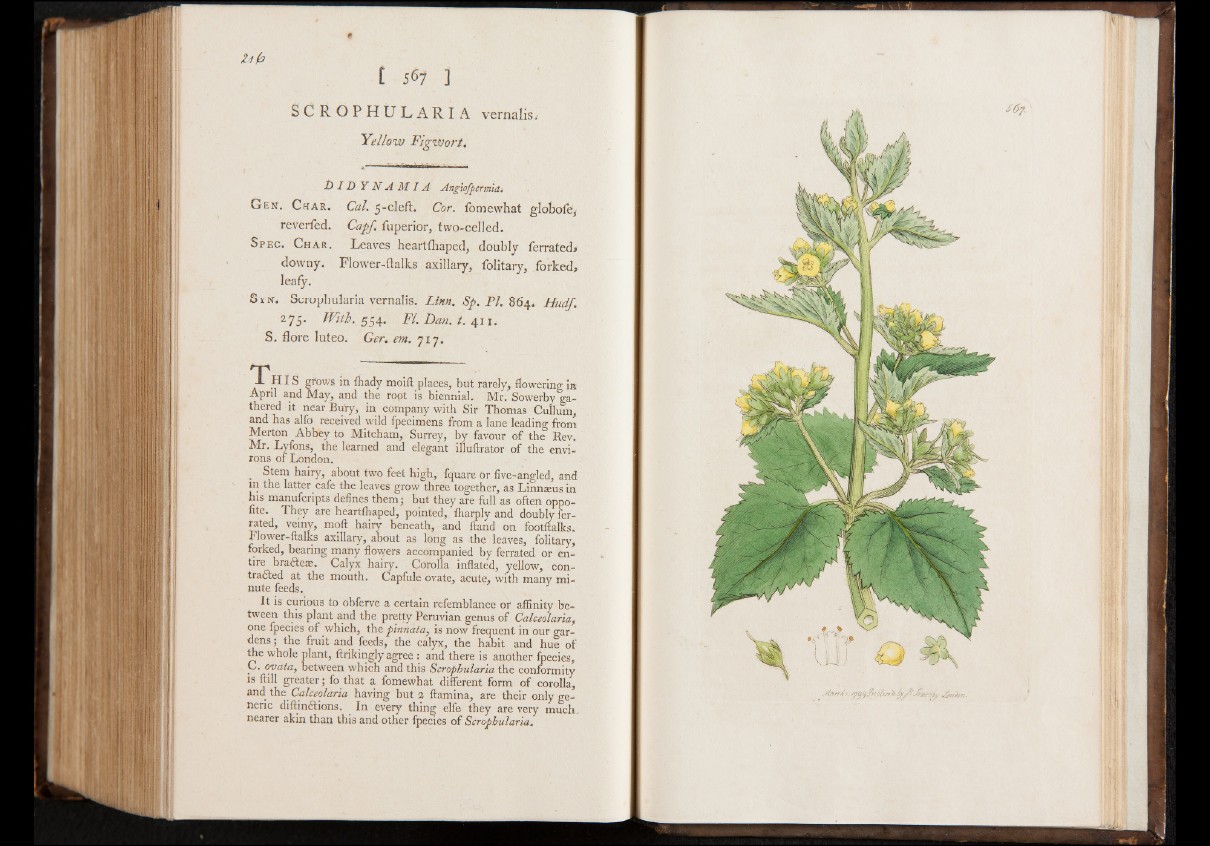
S C ROP H U L A R I A vernalis.-
Yellow FigWort.
L> ID Y N A M IA Angiofpermia.
G ek . C har. Cal. 5-cleft. Cor. fomewhat globofe,
reverfed. Capf. fuperior, two-celled.
S p e c . C h a r . Leaves heartfhapcd, doubly ferrated*
downy. Flower-ftalks axillary, folitary, forked,
leafy.
S y n . Scropbularia vernalis. Linn. Sp. PI. 864. ILiidf.
275* With. 554* FI. Fan. t. 41 x.
S. flore luteo. Ger. em. 717.
± H I S grows in fhady moift places, but rarely, flowering in
April and May, and the ropt is biennial. Mr. Sowerby gathered
it near Bury, in company with Sir Thomas Cullurn,
and has alfo received wild fpecimens from a lane leadino- from
Merton Abbey to Mitcham, Surrey, by favour of the Rev.
Mr. Lyfons, the learned and elegant illuftrator of the environs
of London.
Stem hairy, about two feet high, fquare Or five-angled, and
in the latter cafe the leaves grow three together, as Linneeus in
his manufcripts defines them; but they are full as often oppo-
fite. They are heartfhaped, pointed, fharply and doubly fer-
rated, veiny, moft hairy beneath, and Hand on footftalks.
Flower-ftalks axillary, about as long as the leaves, folitary,
forked, bearing many flowers accompanied by ferrated or entire
bra&eae. Calyx hairy. Corolla inflated, yellow, contracted
at the mouth. Capfule ovate, acute, with many minute
feeds. -
It is curious to obferve a certain refemblance or affinity between
this plant and the pretty Peruvian genus of Calceolaria,
one fpecies of which, the pinnata, is now frequent in our gardens;
the fruit and feeds, the calyx, the habit and hue of
the whole plant, ftrikingly agree : and there is another fpecies,
C. oyata, between which and this Scropbularia the conformity
is ftill greater; fo that a fomewhat different form of corolla,
and the Calceolaria having but 3 ftamina, are their only generic
diftinCtions. In every thing elfe they are very much
nearer akin than this and other fpecies of Scropbularia.